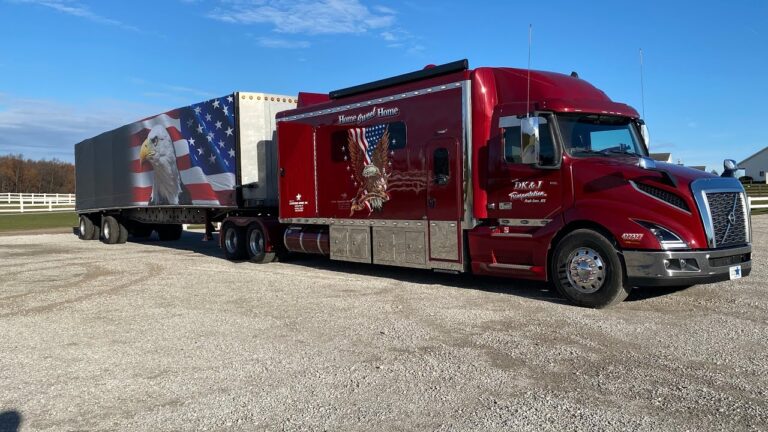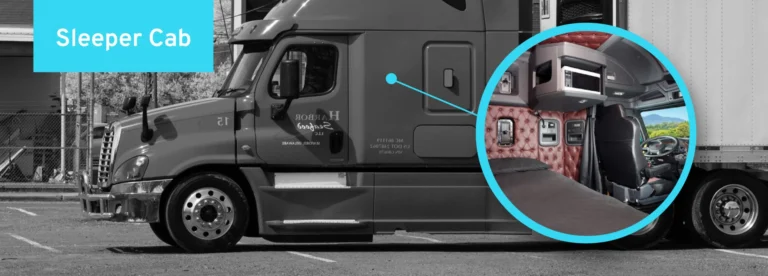
The best way to finance a semi truck is through commercial vehicle financing or a lease purchase program. These options provide tailored financial solutions for acquiring a semi truck, enabling you to start or expand your trucking business without a significant upfront investment.
Commercial vehicle financing usually involves a down payment and fixed monthly installments, while a lease purchase program allows you to lease the truck with an option to purchase it at the end of the lease term. Both options offer flexibility and support for owner-operators and fleet owners.
By understanding the key factors and requirements of each financing method, you can make an informed decision that aligns with your business goals and financial situation.

Credit: www.unitedcapitalsource.com
Navigate As You Want: [show]
1. Type Of Financing Options
When financing a semi truck, there are two main options to consider: lease financing and purchase financing.
With lease financing, you can lease a semi truck for a specific period of time and make regular lease payments. This can be a good option if you’re a new trucking company looking to conserve cash flow or if you’re not ready to commit to purchasing a truck.
On the other hand, with purchase financing, you can buy a semi truck and make regular loan payments. This allows you to own the truck once the loan is paid off. Purchase financing is a good option if you’re an established trucking company and want to build equity in your truck.
Both lease financing and purchase financing have their own advantages and disadvantages, so it’s important to carefully consider your specific needs and financial situation before deciding which option is best for you.
2. Lease Financing
Lease financing for semi trucks can be a practical option for many drivers. It allows for lower monthly payments and preserves cash flow. One of the key benefits is the ability to upgrade to newer, more reliable trucks. However, it’s important to consider the potential drawbacks as well. These can include mileage limits and restrictions on customizations. Overall, lease financing can be a beneficial way to obtain a semi truck, but it’s important to carefully weigh the pros and cons before making a decision.
3. Purchase Financing
Purchase Financing: When financing a semi-truck purchase, there are benefits and drawbacks to consider. Benefits: Purchase financing allows for ownership of the vehicle, potential equity build-up, and the ability to customize the truck to specific needs. This type of financing often offers flexible terms and the opportunity to improve credit. Drawbacks: On the flip side, purchase financing typically requires a down payment, and the buyer assumes responsibility for maintenance and repairs. Additionally, as the owner, the truck’s value may depreciate over time, affecting the overall investment.

Credit: www.nerdwallet.com
4. Factors To Consider
Factors to Consider:
Credit Score and History: Your credit score and history play a crucial role in financing a semi-truck. Lenders assess your creditworthiness to determine loan eligibility and interest rates.
Down Payment: A higher down payment can increase your chances of securing financing for a semi-truck. It shows your commitment and reduces the lender’s risk.
Interest Rates and Terms: Compare interest rates and loan terms offered by different lenders. Lower interest rates and favorable terms can save you money in the long run.
Insurance Requirements: Insurance is another important factor to consider. Different lenders may have different insurance requirements. Research and ensure you meet all the necessary insurance prerequisites.
5. Steps To Finance A Semi Truck
Financing a semi-truck can be a complex process, but by following these steps, you can streamline the process and find the best financing option.
- Research lenders: Start by researching lenders who specialize in commercial truck financing. Look for reputable lenders with favorable terms and rates.
- Gather necessary documents: Before applying for a loan, gather all the necessary documents. This includes your business financial statements, personal financial statements, and identification.
- Compare financing options: Once you have your documents ready, compare the financing options offered by different lenders. Consider factors such as interest rates, down payment requirements, and repayment terms.
- Fill out loan application: After selecting a lender, fill out the loan application accurately and provide all the required information. Be prepared to provide additional documents if requested.
- Finalize the financing agreement: If your loan application is approved, review the financing agreement, and make sure you understand all the terms and conditions. Sign the agreement and finalize the financing process.

Credit: www.bankrate.com
Frequently Asked Questions Of Best Way To Finance Semi Truck
Can I Finance A Semi Truck With Bad Credit?
Yes, it is possible to finance a semi truck with bad credit. Many lenders specialize in providing loans to individuals with less-than-perfect credit scores. However, expect higher interest rates and stricter terms compared to those with good credit. It is essential to research different lenders and understand the terms before committing to a financing option.
What Are The Benefits Of Financing A Semi Truck?
Financing a semi truck offers several benefits, including the ability to preserve working capital. Instead of paying the entire cost upfront, financing allows you to spread out payments over time, enabling better cash flow management. Additionally, financing can provide potential tax advantages, such as deducting interest expenses and depreciation.
How Do I Choose The Best Financing Option For A Semi Truck?
To choose the best financing option for a semi truck, consider factors such as interest rates, loan terms, down payment requirements, and credit score requirements. It is advisable to research and compare multiple lenders to find the most favorable terms that suit your financial situation and long-term goals.
What Documents Are Required For Semi Truck Financing?
Typically, lenders require documents such as a valid driver’s license, proof of income (such as tax returns or bank statements), purchase agreement or invoice for the semi truck, proof of insurance, and credit history information. It is recommended to contact potential lenders to inquire about their specific document requirements for semi truck financing.
Conclusion
Considering the cost of semi trucks, finding the best way to finance one is essential. From exploring traditional bank loans to alternative financing options, understanding the pros and cons of each is paramount. By carefully evaluating your financial situation and business goals, you can make an informed decision that aligns with your needs.
Take the time to research and compare options to ensure you choose the financing method that suits you best. Remember, the success of your trucking business begins with making the right financial decisions.




